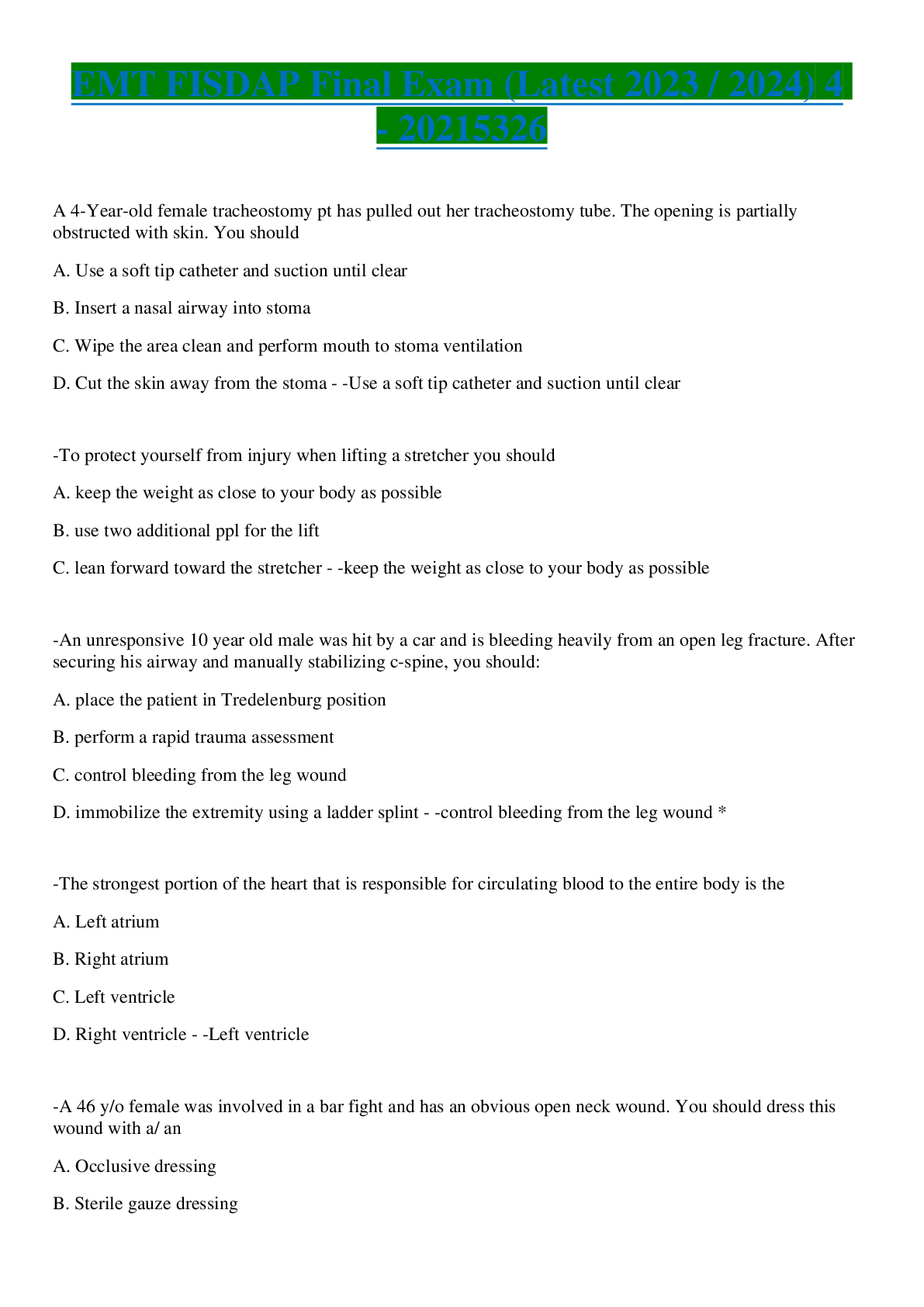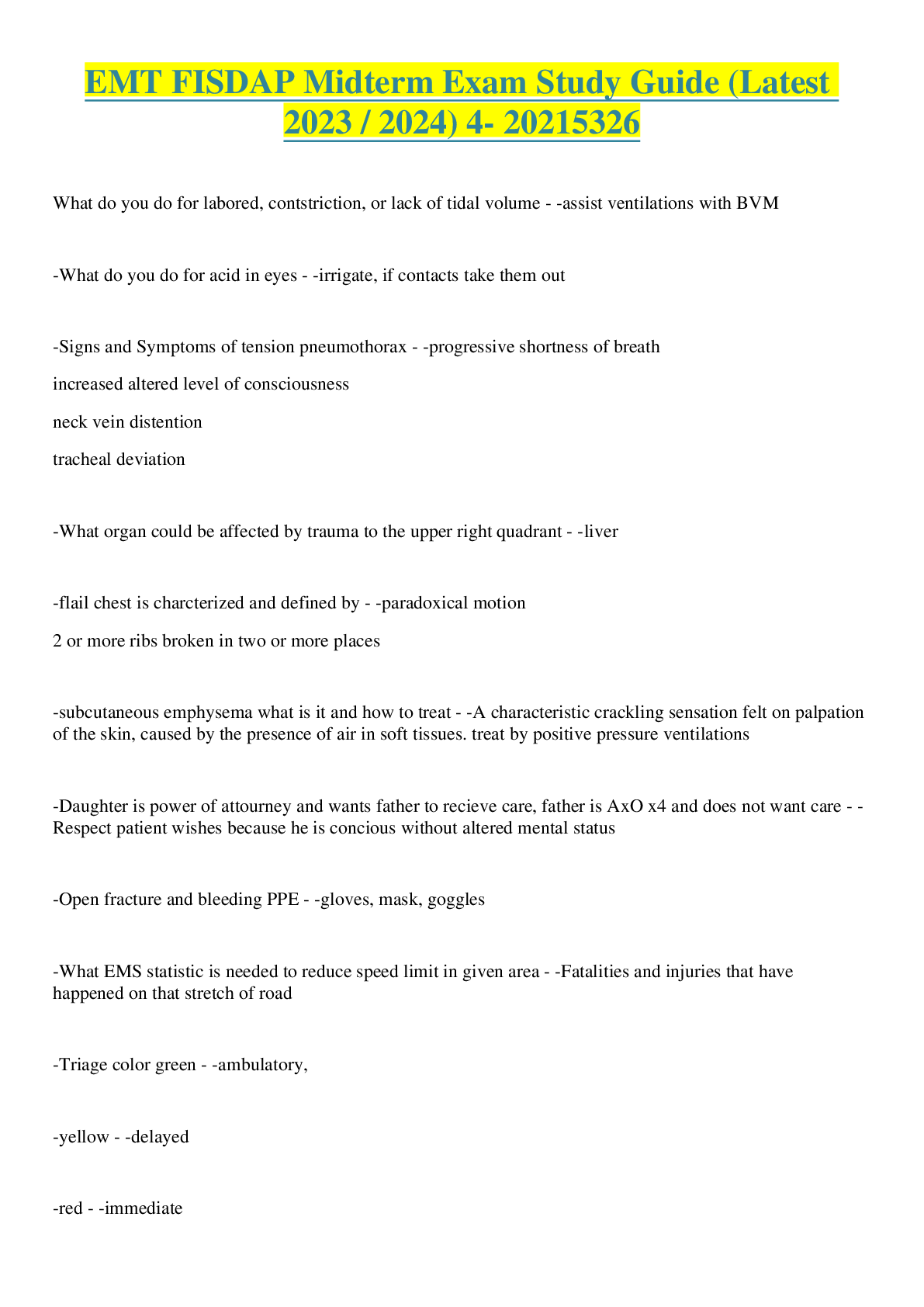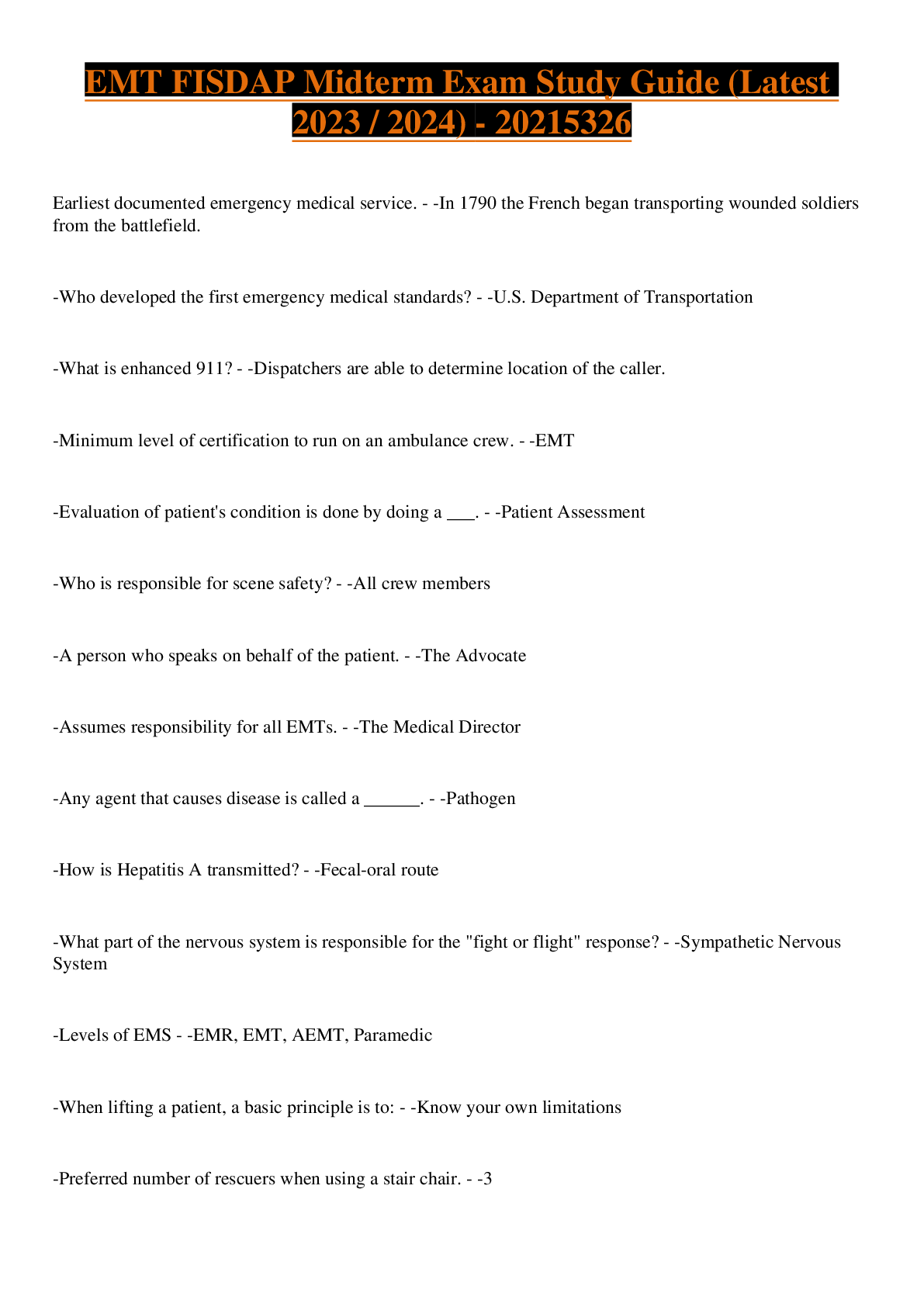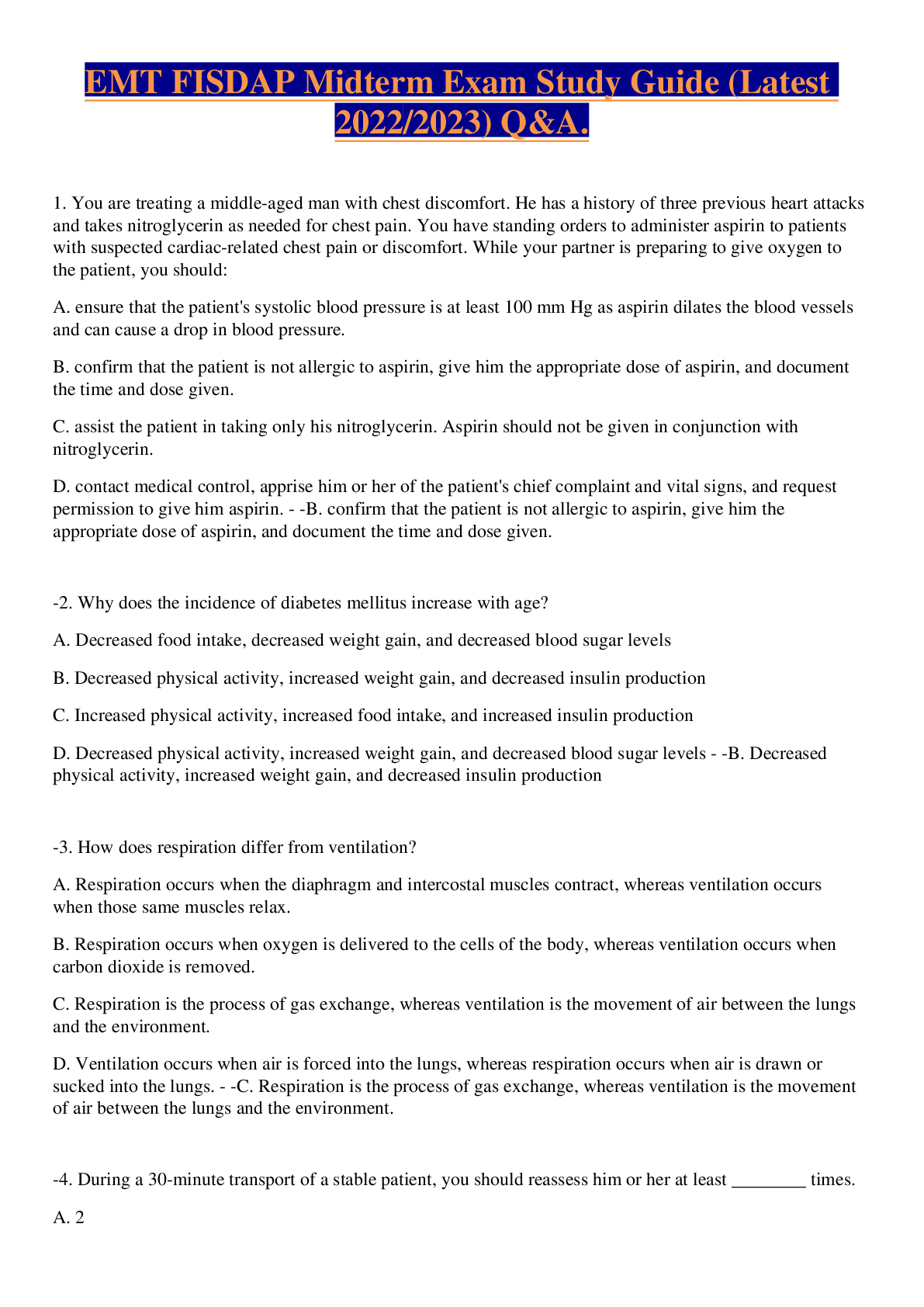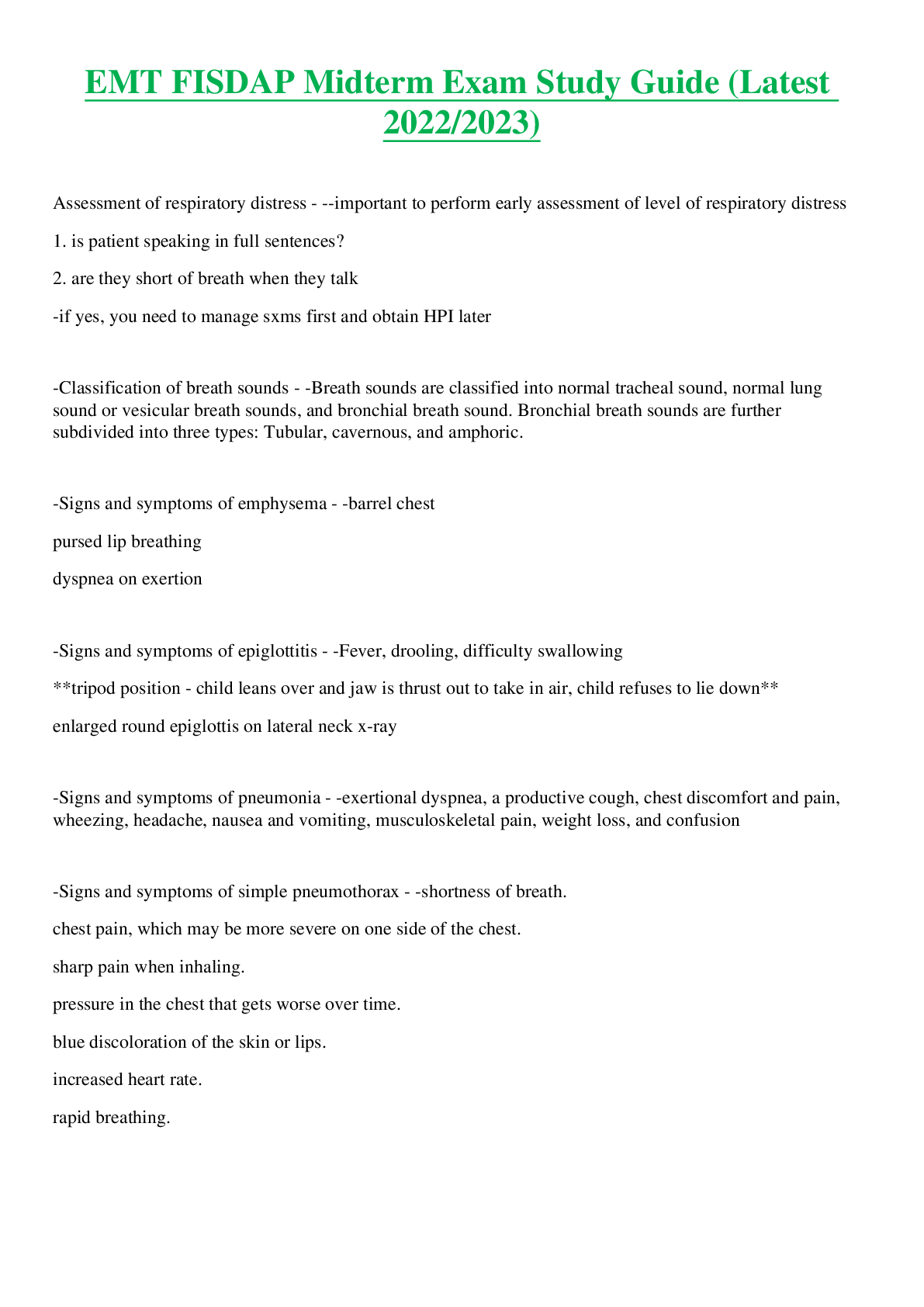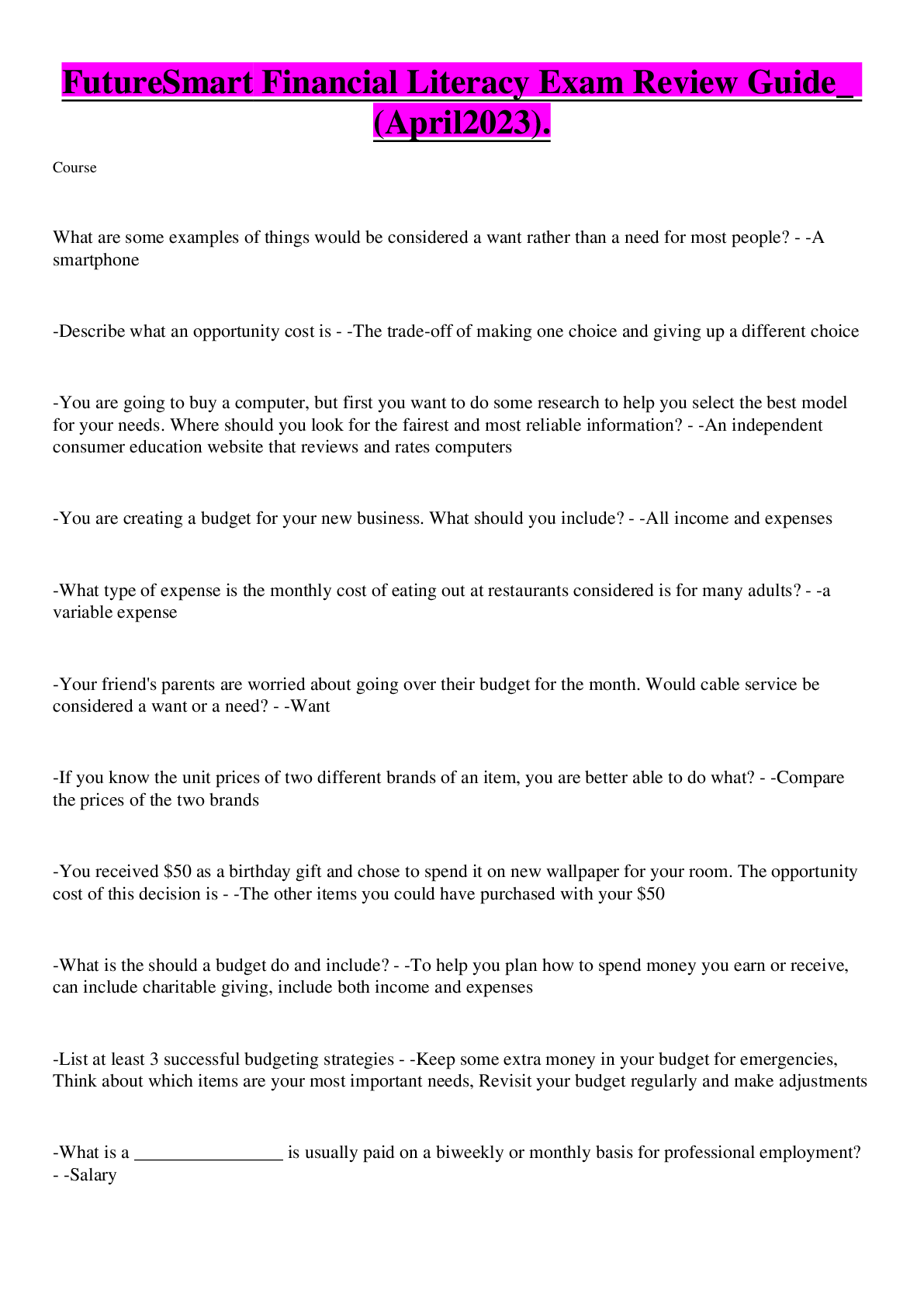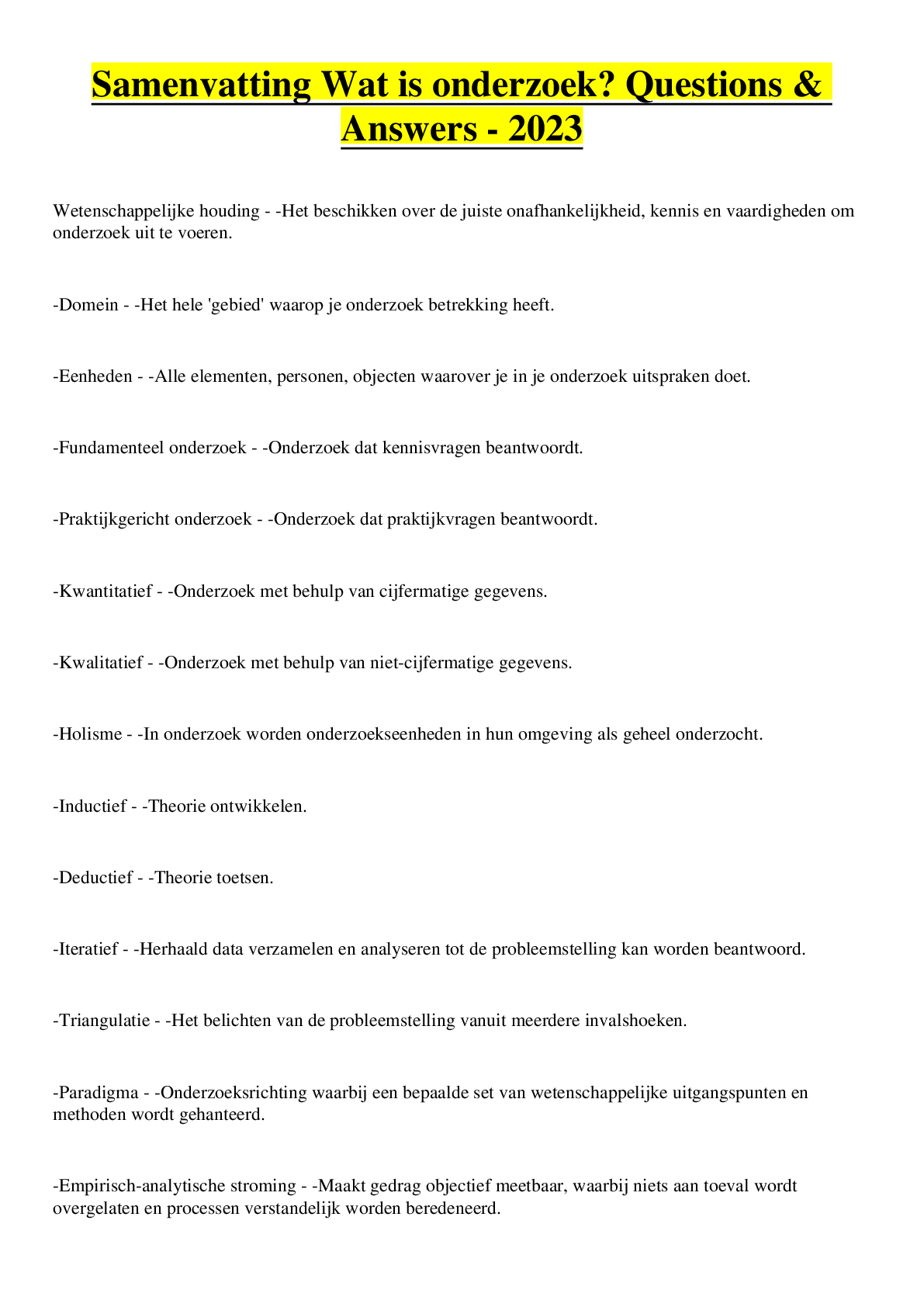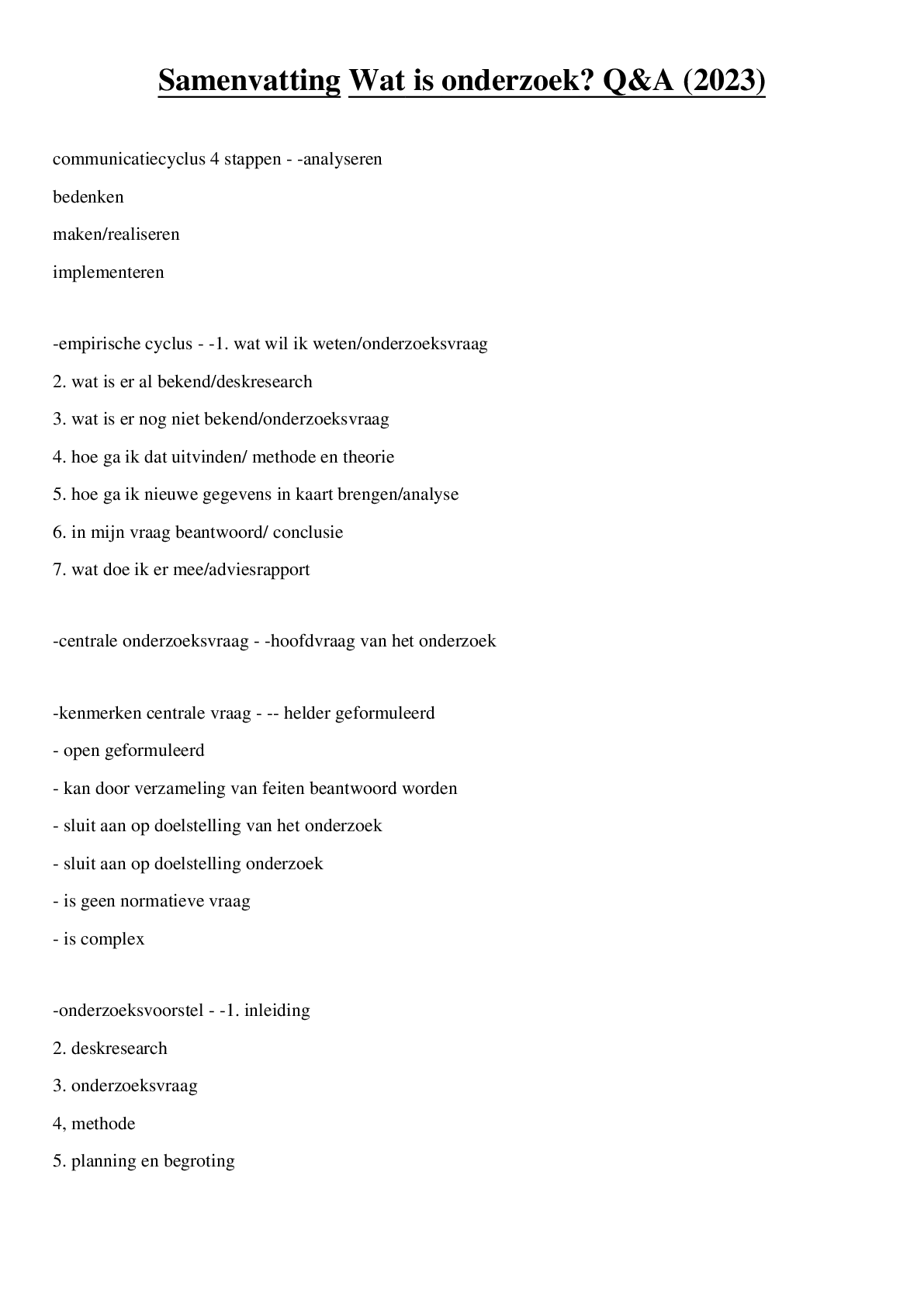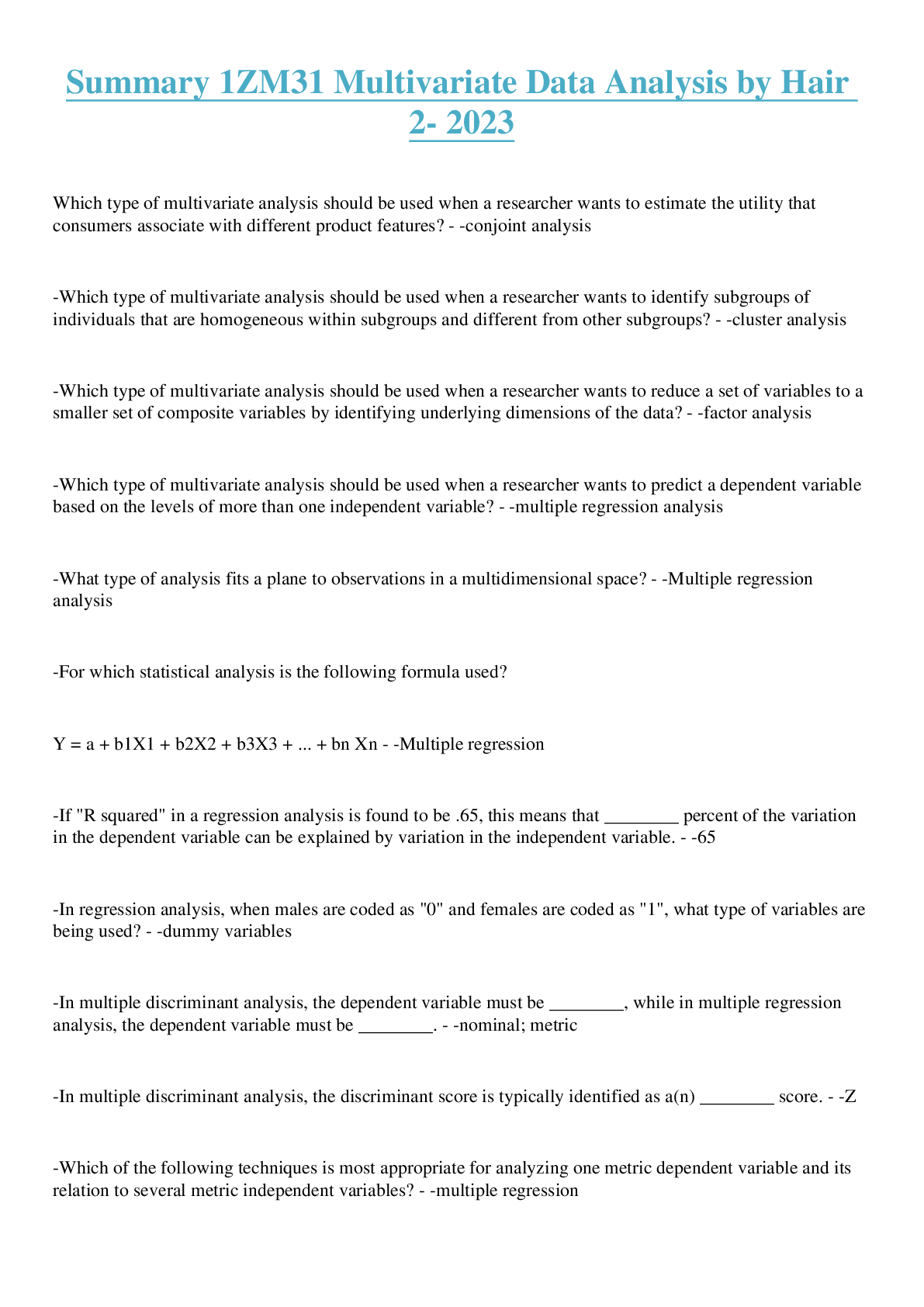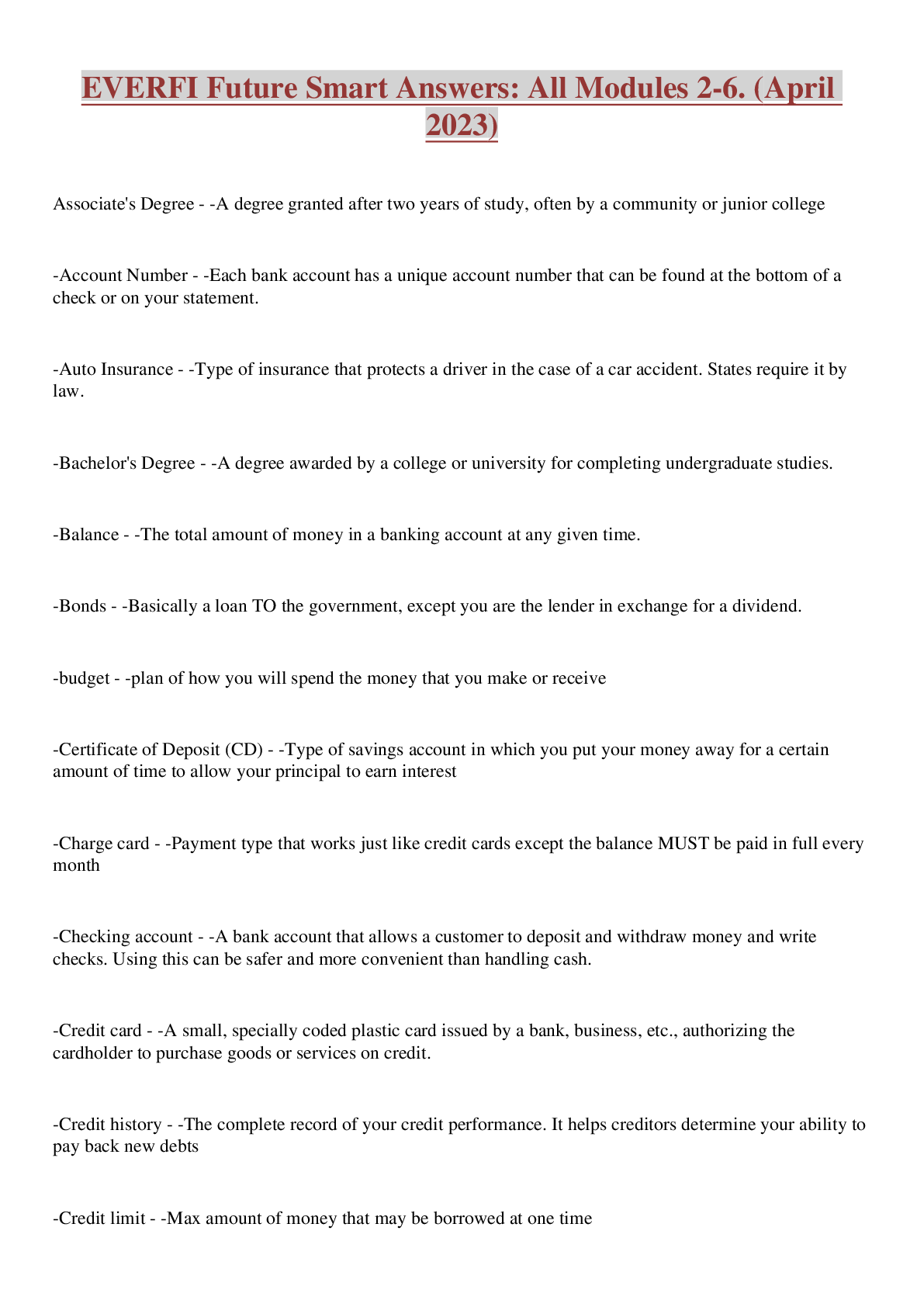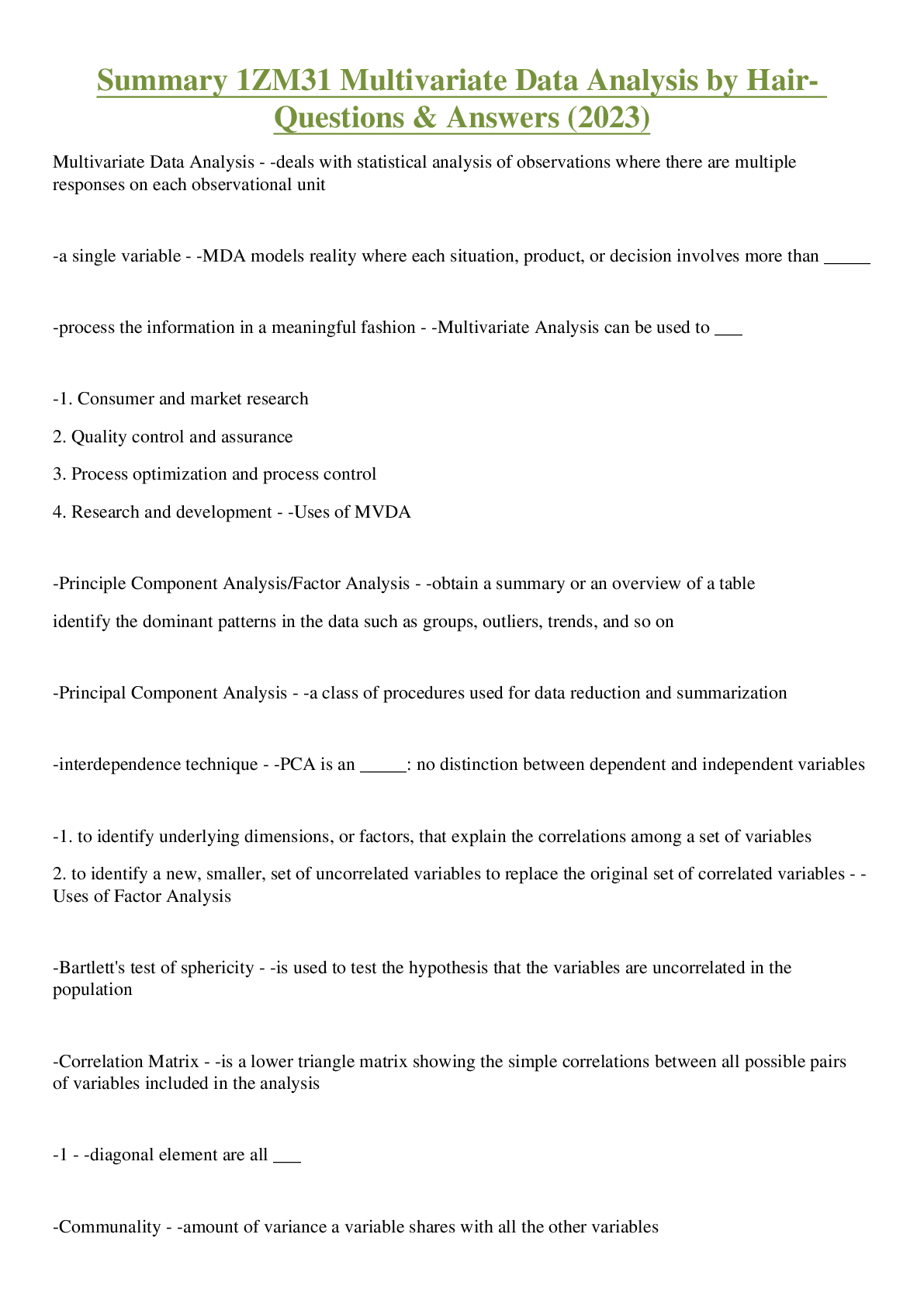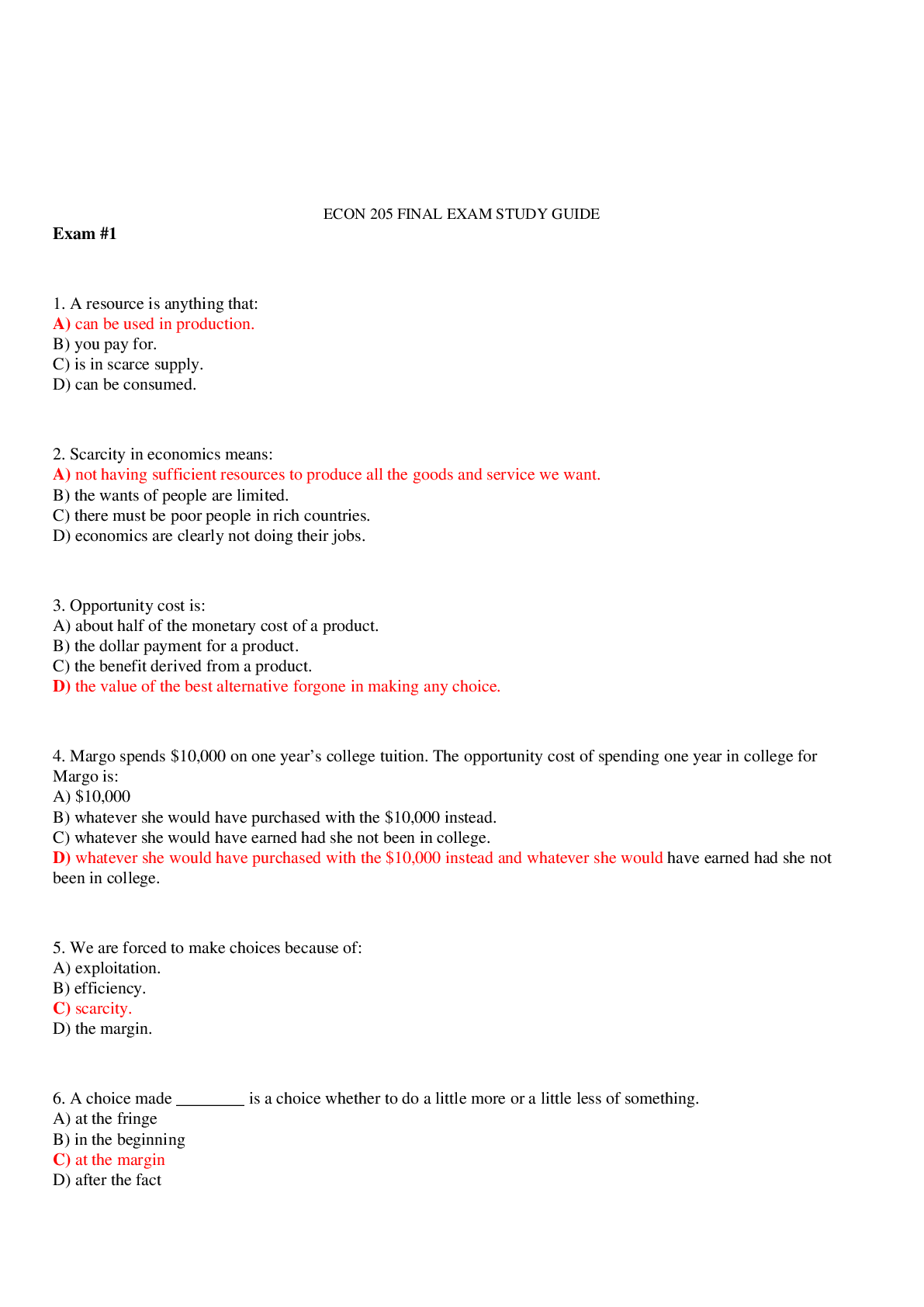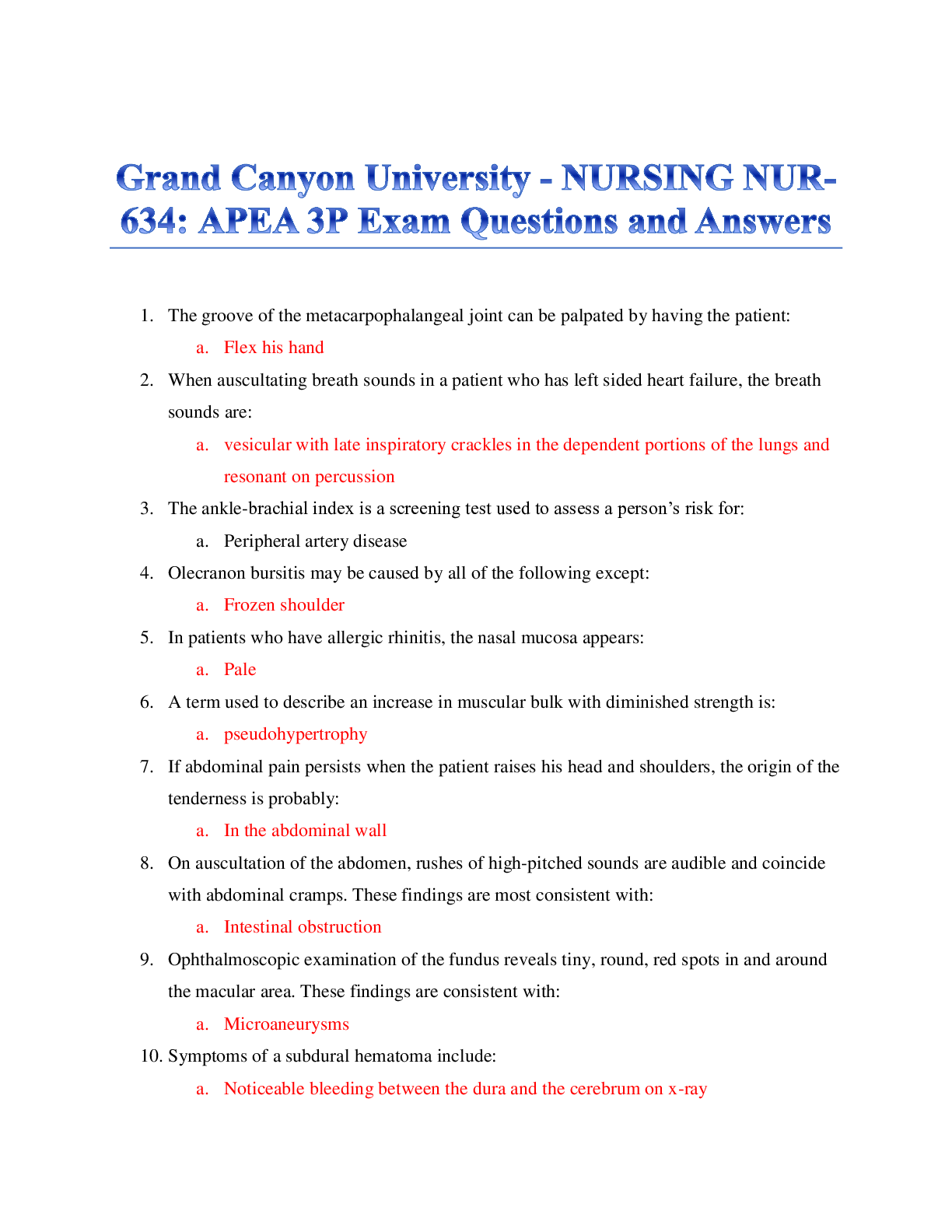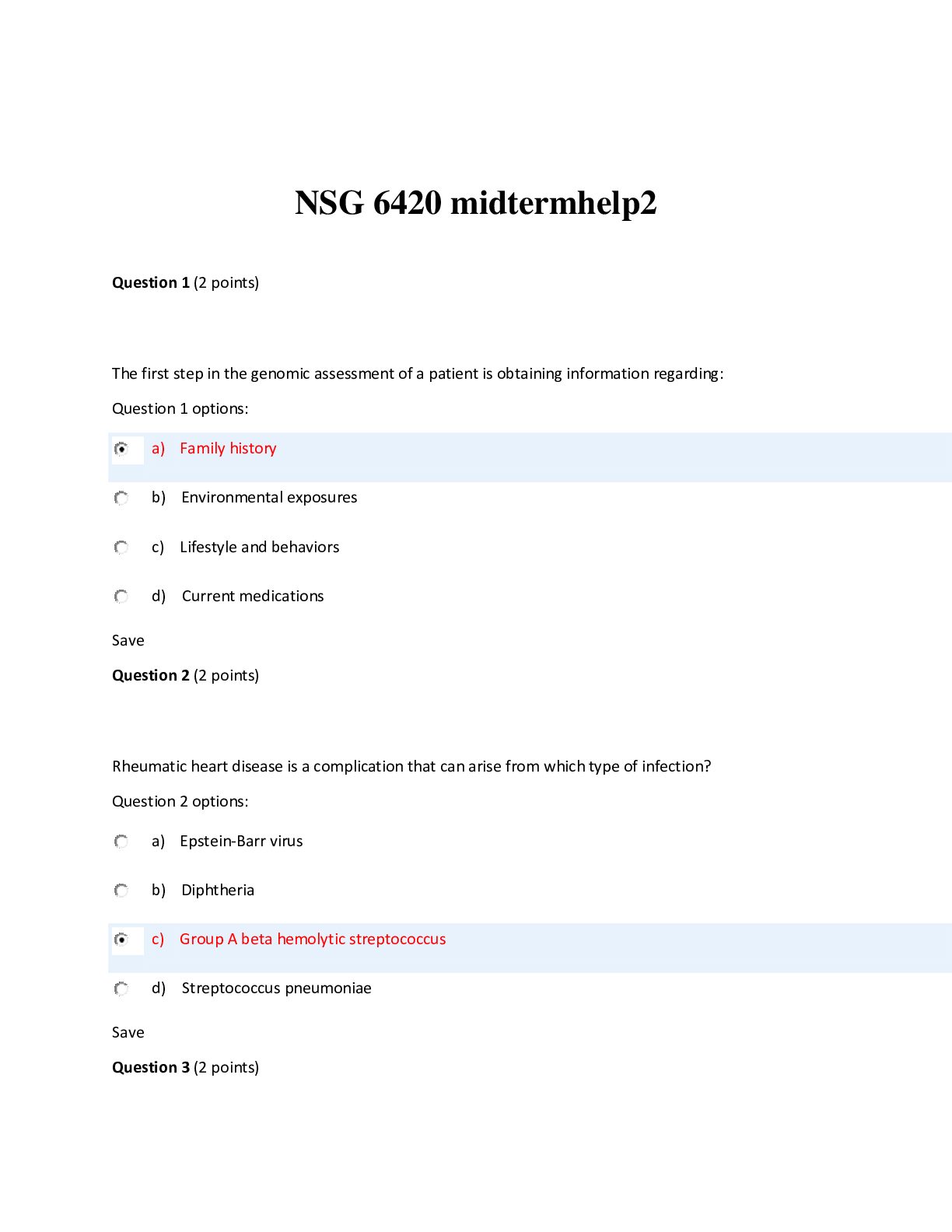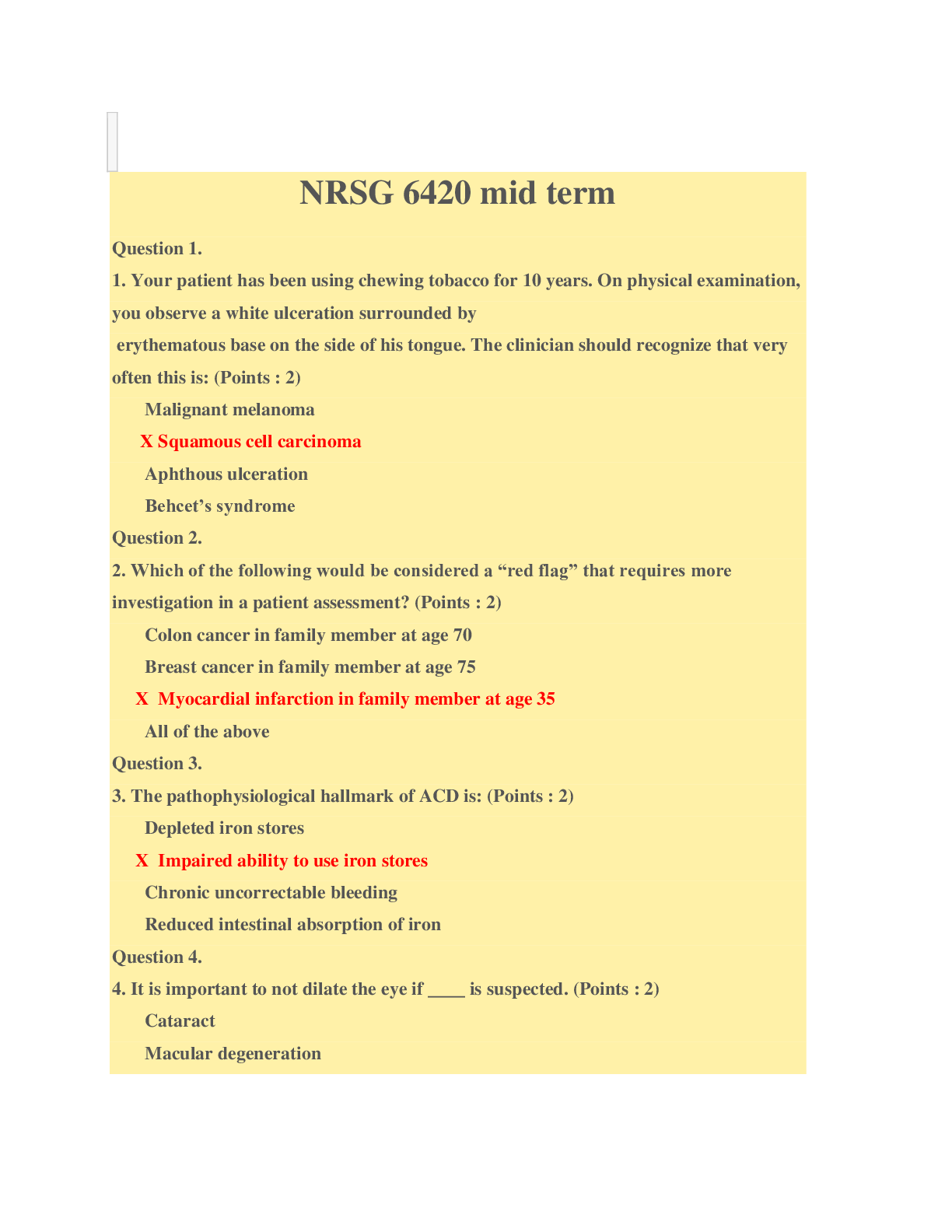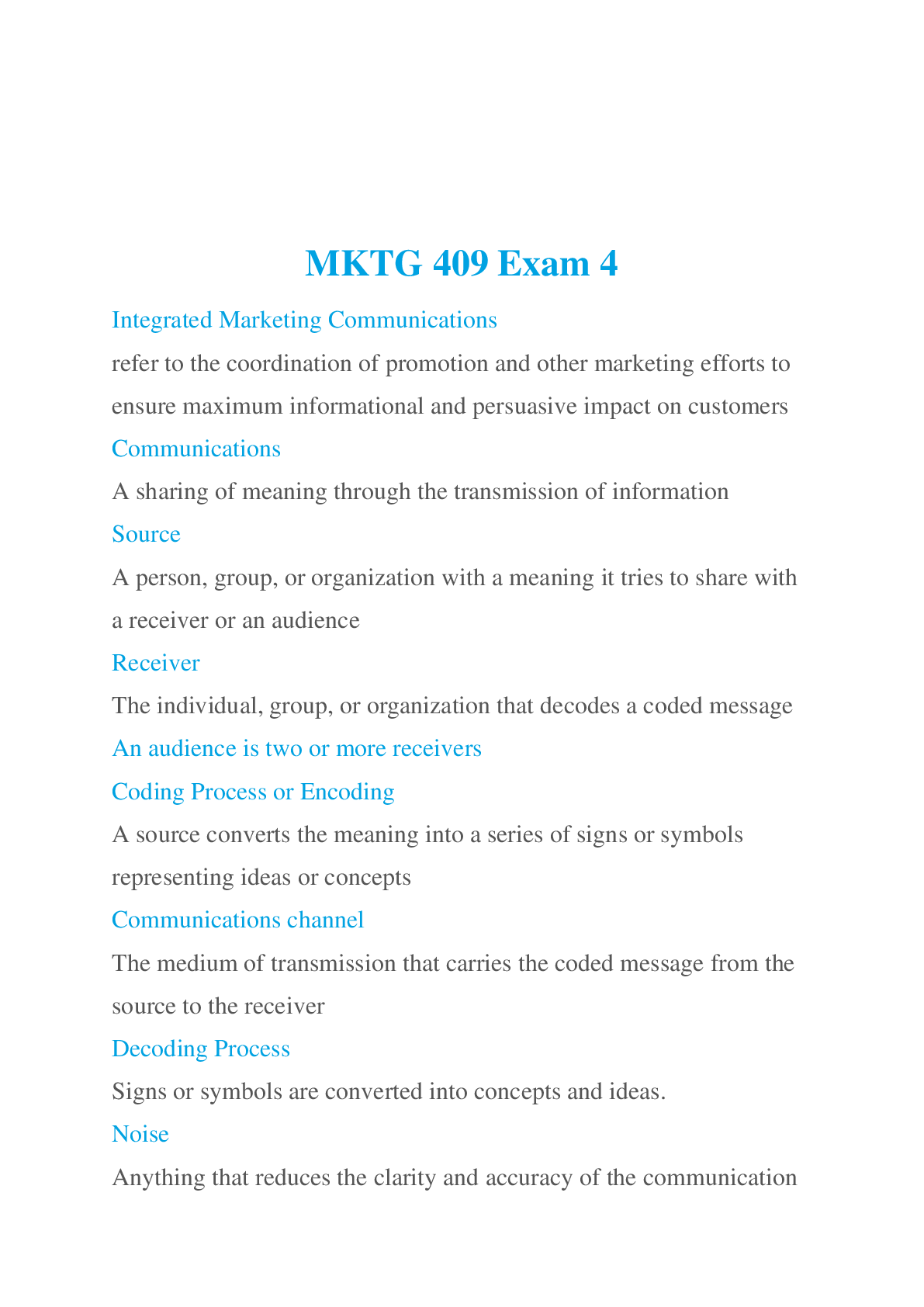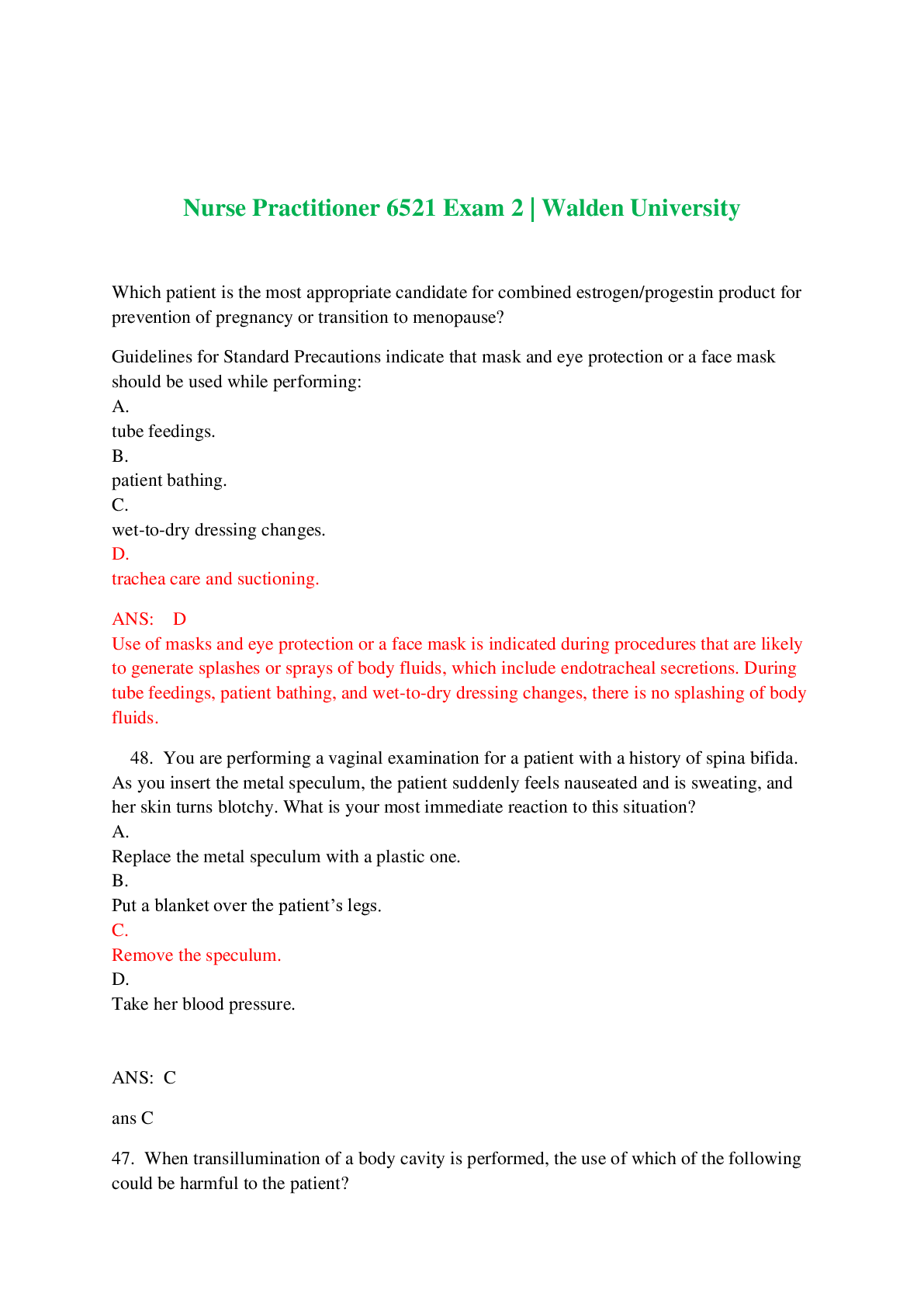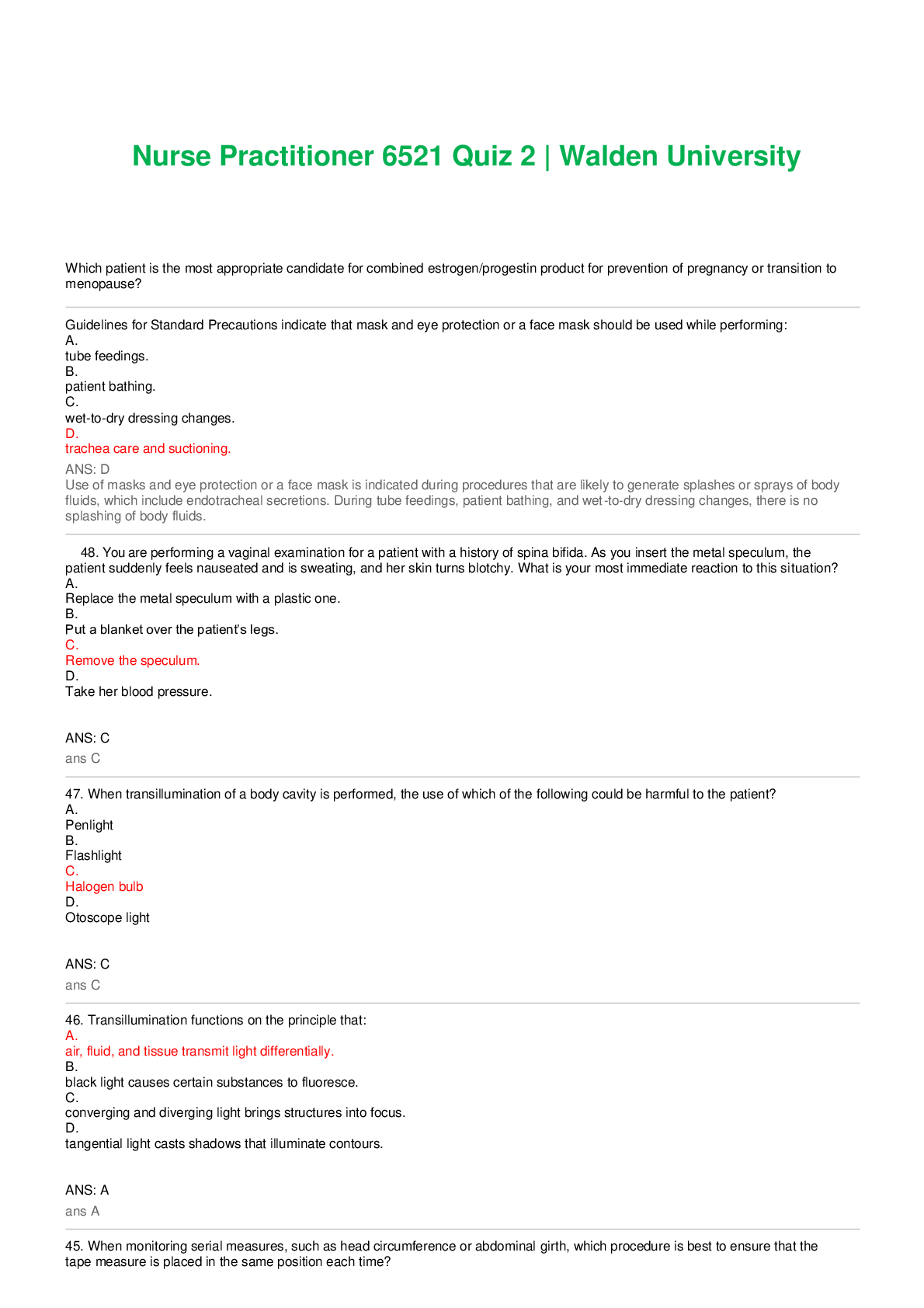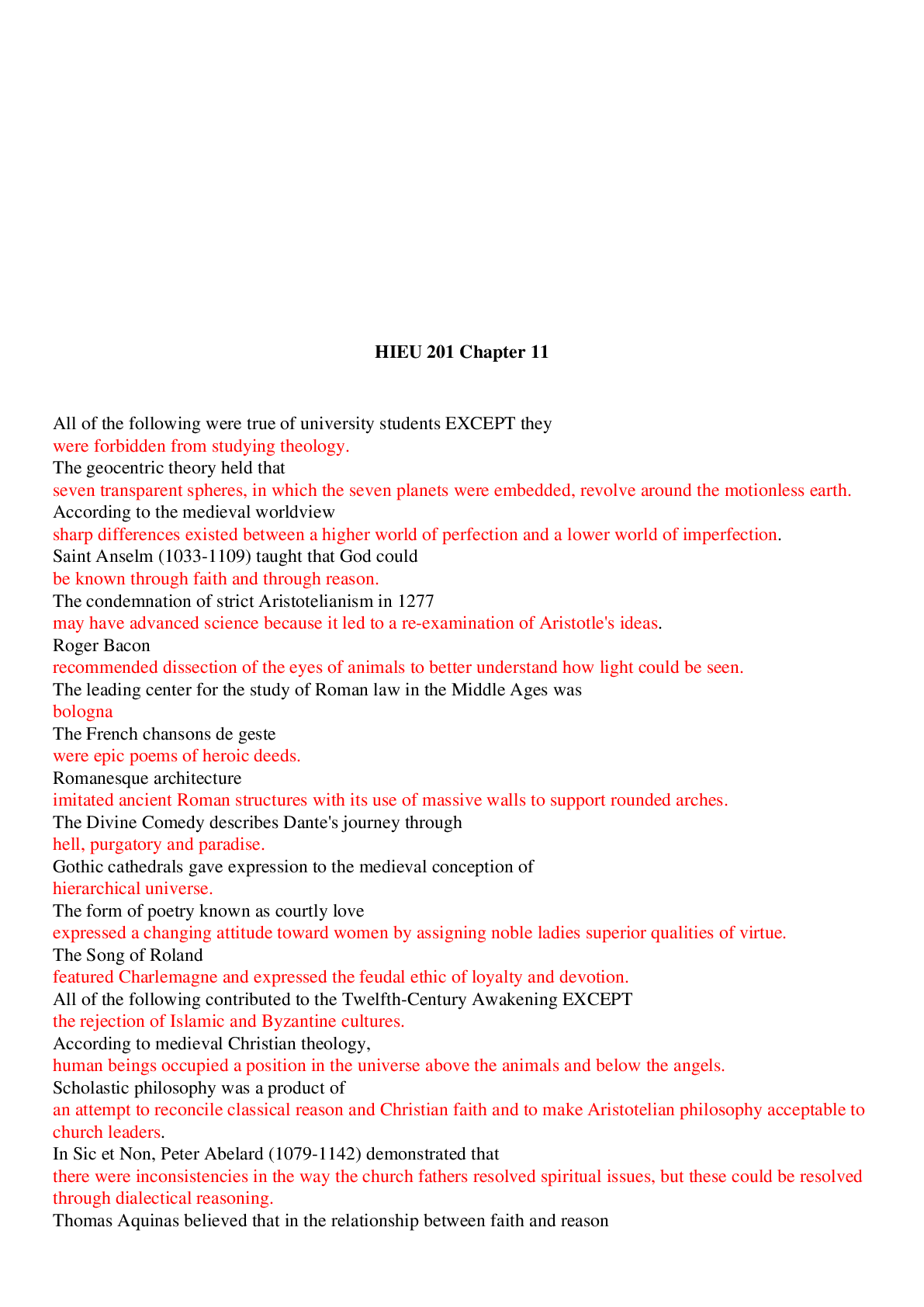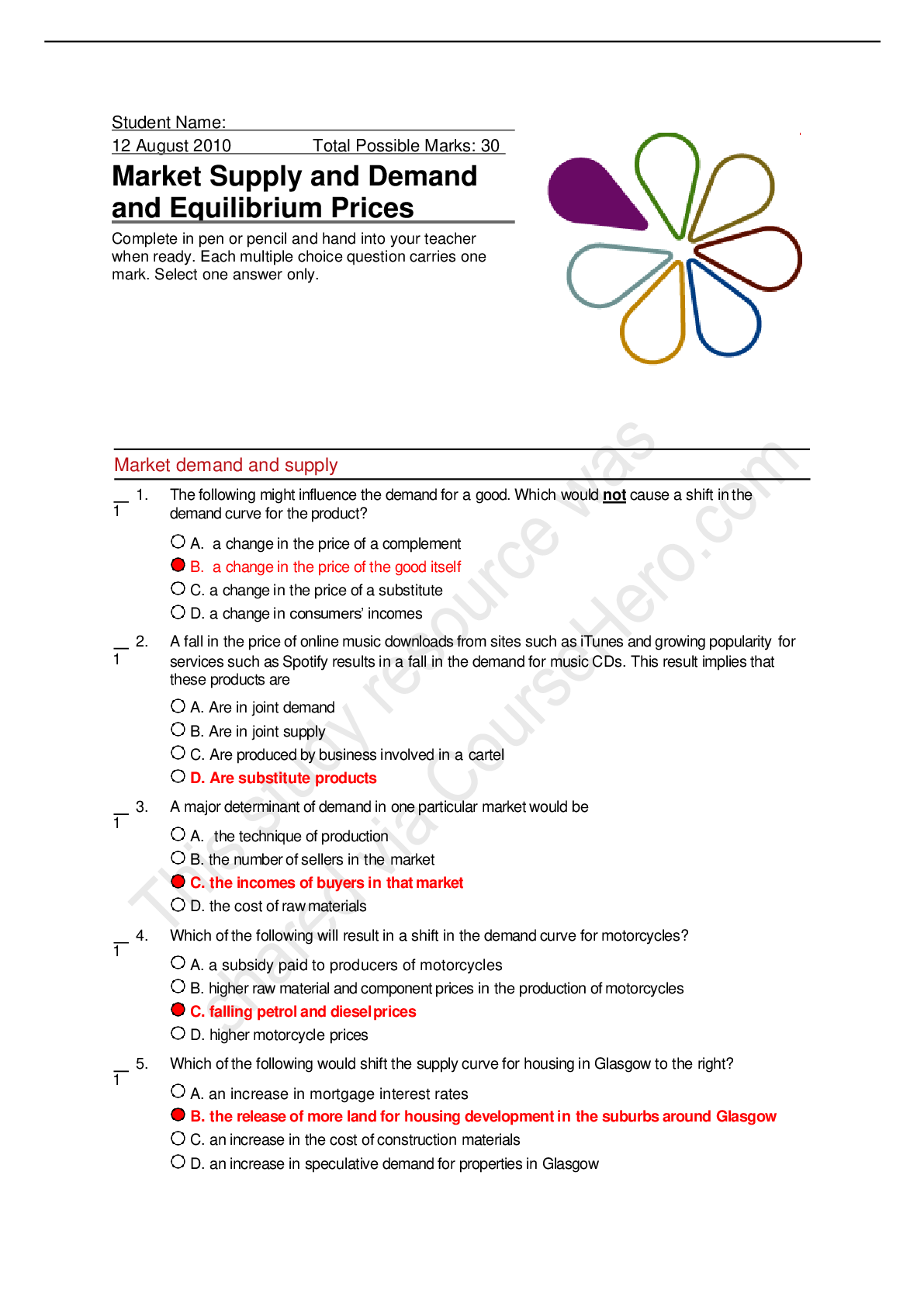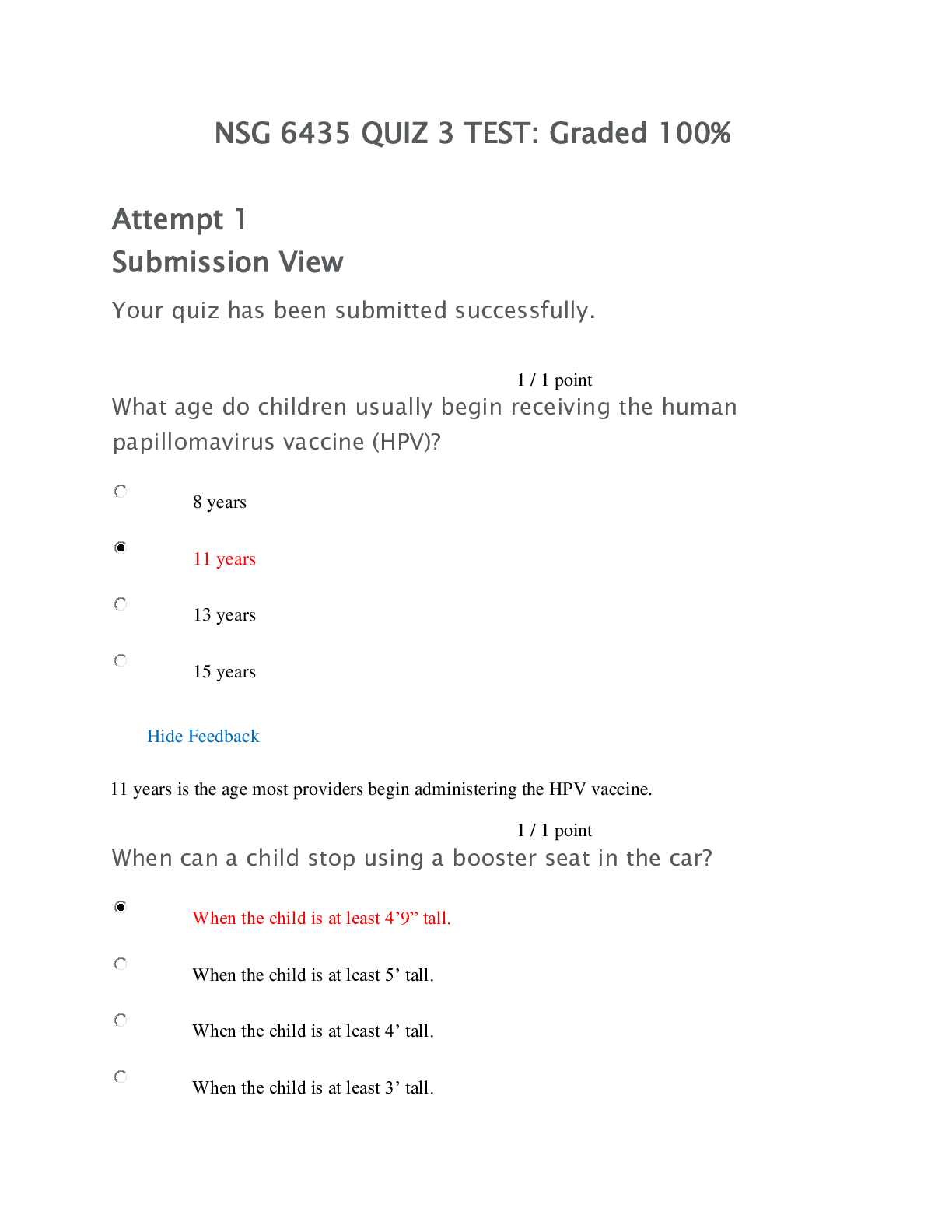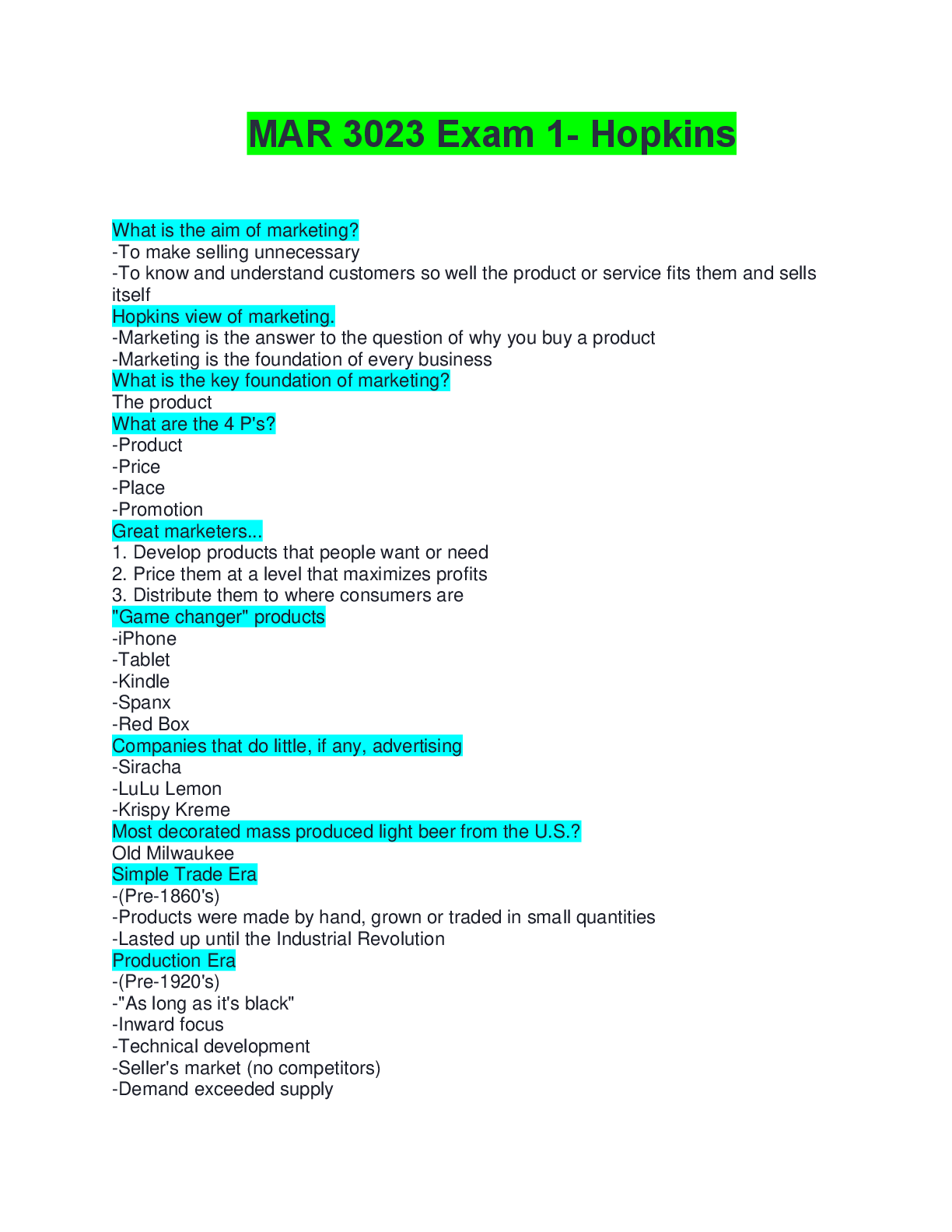Business > EXAM > Summary International Strategy (lectures, sheets & book) Questions & Answers - 2023 (All)
Summary International Strategy (lectures, sheets & book) Questions & Answers - 2023
Document Content and Description Below
Why is international marketing important? - -Creates opportunities for: 1. COUNTRIES - economic advantage - growth of consumption, higher spending on economy, expansion of economy - economic multip ... lier - creates jobs, builds on existing capabilities. 2. FIRMS - opportunities for expansion, growth of profitability and revenues - larger market access, economies of scale - take advantage of differing wants and needs with increased economies of scope 3. PEOPLE - creates jobs, builds on existing jobs, increasing incomes, purchasing power - improves levels of poverty, quality of living, self worth 4. TRADE RELATIONS - development of relationships between international firms and governments through bilateral and multilateral agreements - creates political, economic relationships, breaks down trade barriers 5. CULTURAL EXCHANGE - increased transfer of sport, tourism, customs - spreading of 'who we are' -Steps in international market process - How does international marketing work? - -1. Identify target market through market research 2. Can it be made to work - is it safe to do business > war zones, debt crisis 3. Is it profitable - most beneficial export model to be used 4. Negotiate to make it happen - employ staff with the skills, experience and expertise needed for success 5. Manage, monitor and adapt - consistently review and analyse situation to identify adaptation required to suit the constantly changing environment -Analysing challenges for international firms - market planning - -MARKET SCHEMATIC MODEL - draw 1. EXTERNAL ENVIRONMENT - how areas of PESTEL are different overseas, implications for business and its operations, adaptation? 2. POSSIBLE CUSTOMERS/TARGET CUSTOMERS - how to segment international market, different to domestic - are all international markets segmented the same? - consumers from different markets use products differently and have diff wants and needs, thus marketing strategies need to be adapted. 3. MARKET PLACE - differences in how business is conducted with customers, partners, suppliers, shareholders - different business cultures and interactions - habits, customs, traits. e.g. gaunxi - implications for business operations 4. COMPETITORS - how do competitors compete in market, what is the basis of competitive advantage, what does this mean for the business' competitive advantage 5. MARKETING PROCESSES - What do all these changes mean for the marketing plan: getting information, evaluating information, making decisions 6. OUTCOMES - What do all these changes mean for the outcomes and success of the marketing plan: profitability growth, quality customers, repeat customers -What is international strategic planning? - -International strategic planning is the process of considering long-term growth options and the firm viewing international market/s development as a key aspect of this. -International strategic planning process - -DRAW -International Planning Critera - -1. Why export? - proactive/reactive 2. Which country/market? - most profitable, highest opportunity, found through market research 3. How to enter market? - models 4. How to distribute to consumers? - consider strategies used to satisfy their needs and wants -Typical stages a firm's goes through to reach internationalisation - -1. Partially interested firm - enquiries, research 2. Exploring firm - test marketing 3. Experimental exporter - trials 4. Experienced small exporter 5. Experienced large exporter >>consider born global firms -Considerations of international strategic planning - -1. Most attractive markets - research 2. Which business model is most beneficial - risk/market access/cost 3. What is the basis of competitive advantage in the market 4. Profit expectations 5. How can the business build long-term growth capabilities -Major types of international marketing - -Proactive - Actively taking initiative to expand. Reactive - Responding to market conditions Internal - Expanding through internal capabilities External - Expanding through external opportunities -Main strategy considerations when exporting - -1. Local to global needs 2. Alliances to independence 3. Regional trade agreements 4. Business cultures -International planning tools - New markets evaluation - -1. COUNTRY ANALYSIS - GE/McKinsey Matrix - assessing viability of country markets by mapping them on a grid depending on 2 factors of business strengths and market attractiveness. Identifies which markets should be invested in and which should be divested. 2. MARKET ANALYSIS - Porter's 5 Forces Analysis - evaluates competitive situations of industry in the market by analysing 5 factors: - availability of substitutes, bargaining power of suppliers, bargaining power of customers, threat of new entrants and rivalry amongst competitors 3. MARKET ENTRY - 12 business models - diff levels of risk/market access/cost 4. MARKET STRUCTURE AND POSITION IN MARKET - key issues in strategic groups - structure of industry, size and position of competitors in groups, potential to move to another group 5. PROFITABLE TARGET CUSTOMERS - segmentation of international markets, different segmentation for different countries, segment depending on buyer characteristics, buyer behaviour, developed/developing, economic structures, ease of doing business, regulation requirements 6. PRODUCT/SERVICE NEEDS AND WANTS - product adaptation in different markets to suit different wants and needs, integral to success, customisation 7. STRATEGY EVALUATION - how will business compete, what is competitive advantage, can it be made sustainable, how do competitors compete, their influence on business 8. SUPPLY CHAIN EVALUATION - identify economic structures of supply chain, identify any international outsourcing options, create risk profile of each link in value chain 9. RISK MANAGEMENT EVALUATION - Risk management process - establish context, identify, analyse, evaluate, treat. -What is international market research? - -International market research is the process of gathering, analysing and evaluating information in order to decide which international markets are most attractive and then how to implement business strategies to be profitable in that market. Involved in every aspect of - management, planning, strategy, tactics, implementation. -International market research decisions - Information required - -1. WHICH COUNTRY? - Determine which market is most attractive >Big market/Small country or Small country/Big market >Consumption levels: base on per capita not total - Determine whether to leave or expand >conduct cost/benefit analysis 2. WHICH MARKET? - PESTEL analysis: identify opportunities and threats, which has most supportive external environment 3. POTENTIAL TARGET CUSTOMERS - Segmentation analysis, Analyse most attractive segments, Target strategies towards that segment 4. MARKET PLACE - how do customers buy products - online, store, both - what structures are needed for purchase - systems, payment, store, website - what interface is required - people skills, systems, support - logistical issues - transport, delivery, timeliness 5. COMPETITORS - how do competitors compete - options of competitive advantage - implementation options in market 6. YOUR BUSINESS - issues of product, pricing, promotion and distribution - key roles, responsibilities, skills, management - financial evaluation criteria -The stages of the international market research process - -1. PROBLEM IDENTIFICATION - need to establish - who will approve research, what is the objective, how to obtain info, what to do with info 2. RESEARCH DESIGN - framework needed for design - what data is required, what info does data needed to produce - critical issues in research resign: (1) construct equivalence - respondent and researcher view questions and concepts differently (2) measurement and gradation equiv - different units of measurement, perceptions of measurement (3) sample equiv - different external environments influence on repsondents answers (4) translation equiv - differences in verbal and non-verbal communication affects results. 3. COLLECTION OF DATA - primary data - collected by business, first hand. > very time consuming, costly, bias, equivalence issues > reliable, relevant, focused on business strategy - secondary data - previously collected externally >age, accuracy, reliability, relevance, bias of data > quick, easy and relatively cheap to obtain - quantitative - hard, factual data, not subjective >most common method - questionairre - qualitative - soft, subjective data based on opinions and perceptions. needs to be translated into quantitative data to be used practically >most common methods - focus groups, surveys, delphi studies, observations 4. ANALYSIS AND INTERPRETATION - sort, code, enter, analyse data - identify trends - determine implications for business: management, tactics, strateg [Show More]
Last updated: 2 years ago
Preview 1 out of 18 pages
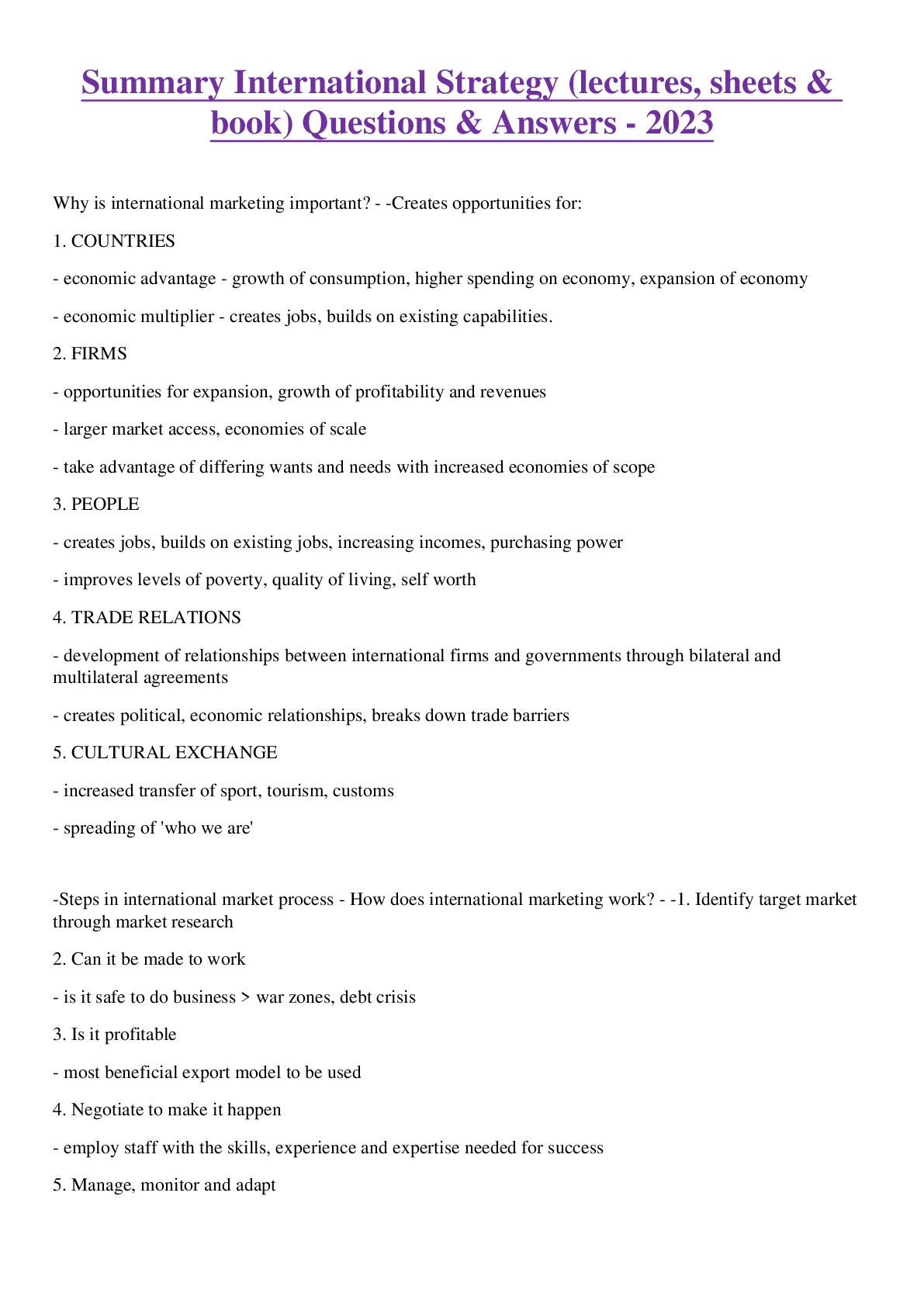
Buy this document to get the full access instantly
Instant Download Access after purchase
Buy NowInstant download
We Accept:

Reviews( 0 )
$13.00
Can't find what you want? Try our AI powered Search
Document information
Connected school, study & course
About the document
Uploaded On
Apr 06, 2023
Number of pages
18
Written in
All
Additional information
This document has been written for:
Uploaded
Apr 06, 2023
Downloads
0
Views
108

